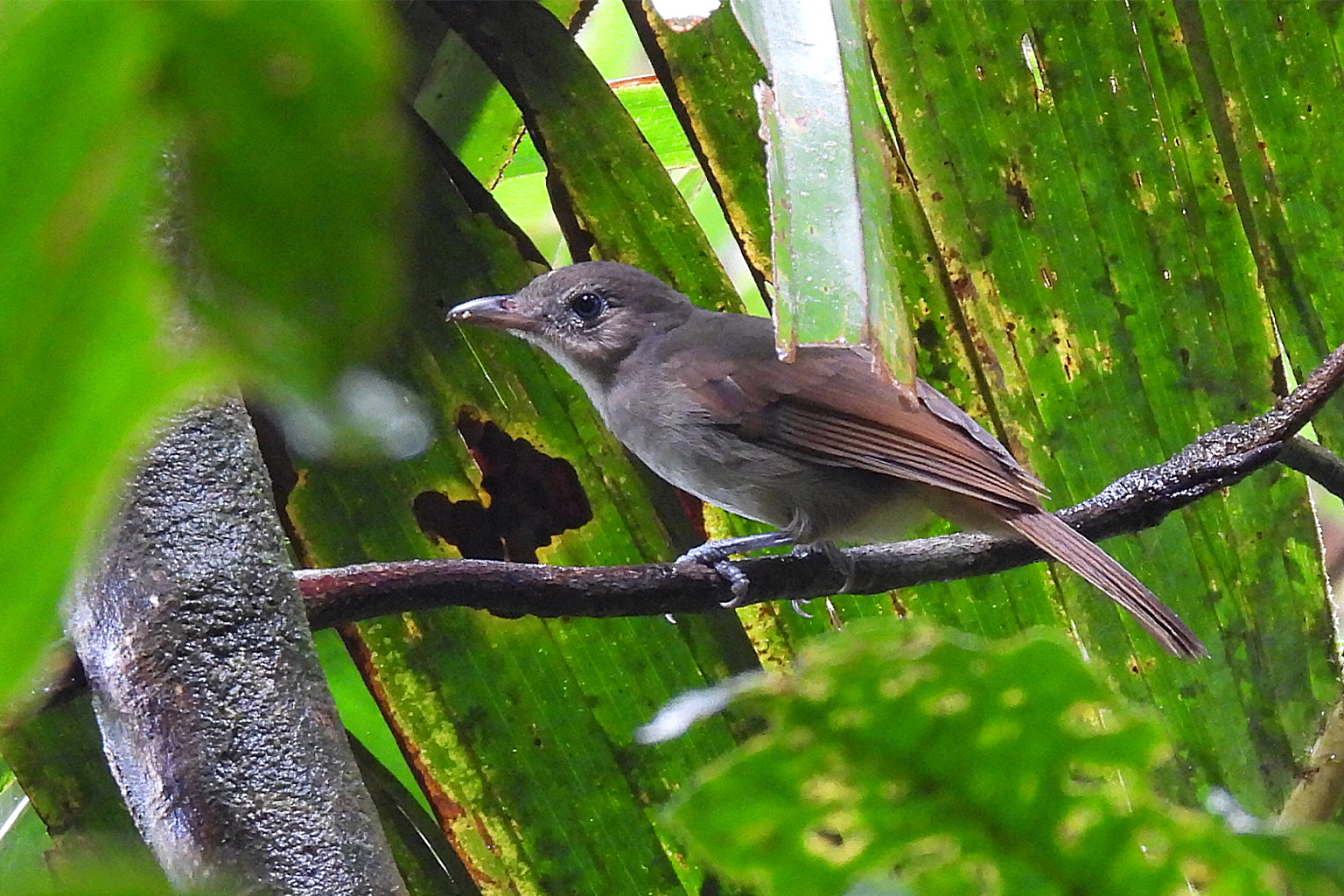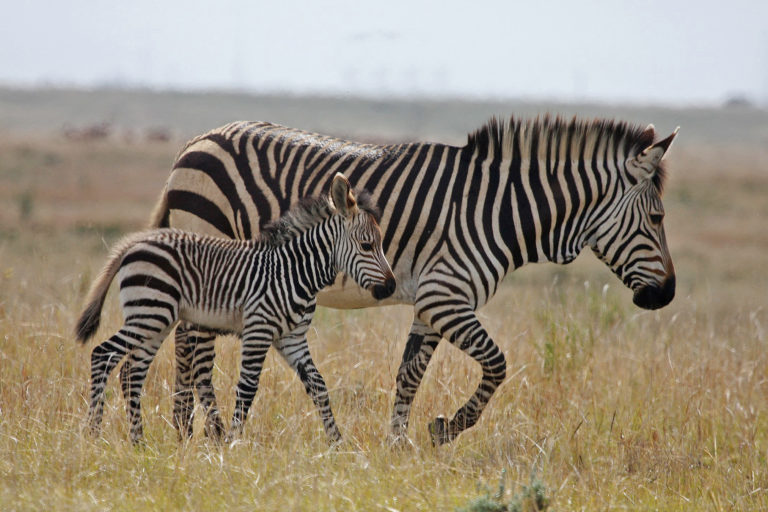- In a business-as-usual carbon emissions scenario — humanity’s current trajectory — two in five land vertebrates could be exposed to temperatures equal to, or exceeding, the hottest temperatures of the past decades across at least half of their range by 2099. If warming could be kept well below 2°C (3.6°F), that number drops to 6%, according to a new study.
- More than one in eight mammal species have already lost part of their former geographical range. In many cases, this means those species no longer have access to some (or sometimes any) of their core habitat, making it much more difficult to survive in a warming world.
- When animal populations continue to decline in an area even after it has been protected, one possible explanation may be that the conserved habitat is marginal compared to that found in the species’ historical range.
- In the light of recent pledges to protect 30% of the planet’s surface, it is important to prioritize the right areas. The focus should be on conserving core habitat — which is often highly productive and already intensively used by humans — while respecting the rights and needs of Indigenous people, many of whom have also been pushed to the margins.
As global temperatures continue to rise, scientists have tried to predict how this will affect the many animal species already imperiled by human actions today. However, most studies have focused primarily on the effects of an increase in mean temperatures — not the higher frequency or intensity of extreme temperatures that climate change also brings.
One group of researchers estimated, for example, that at around 3° Celsius (5.4° Fahrenheit) of planetary warming compared to pre-industrial levels, one in two insect species and a quarter of all vertebrates would lose at least half of their geographical range. Such findings are certainly informative (and worrying), but mean temperatures may not be the animals’ biggest problem.
A handful of very hot days may do far more damage to an already struggling species than a degree or two extra; many individuals might perish if their food burns up in a wildfire or vanishes in an intense drought, for example, or they could die due to overheating. And as many researchers have pointed out, the places with the highest increases in mean temperature may not necessarily be the same ones that will experience the highest frequency of extremely hot days — or where the most threatened animals are.
In 2020, a study compiling the fates of more than 500 animal and plant populations from around the world found that most local extinctions (including, for example, the disappearance of a dozen amphibian and reptile species from the lower reaches of Madagascar’s Tsaratanana Massif) had occurred in places where changes in mean temperature had been limited, but where the hottest days had become significantly hotter.
This work inspired a team of four researchers led by ecologist Gopal Murali, then at Ben-Gurion University of the Negev in Israel, now at the University of Arizona, to investigate the extent to which 33,548 terrestrial vertebrate species may be exposed to unusually high temperatures by 2099.

Exceedingly hot, all year long
The research team began by defining terms: specifying extremely hot days as those on which temperatures equaled or exceeded the temperature each species had experienced on the 1% hottest days between 1950 and 2005.
“We considered how frequent they’d be exposed to such temperatures and for how long,” Murali explains, “as well as the intensity of exposure: how much the temperature would exceed the highest historical temperatures.”
The results, recently published in Nature, suggest that if warming could be kept well below 2°C (3.6°F) by 2100, as agreed to at the 2015 Paris climate summit, then only around 6% of the vertebrate species analyzed would experience extreme temperatures across at least half their range by 2099. “Unfortunately,” says study co-author Uri Roll, “we are still dead course on the business-as-usual model” — of 4.4°C (7.9°F) warming by 2099 — “which means at least 40% of land vertebrates are at risk.”
The hardest-hit areas, according to the researchers, would tend to be in the mid-latitudes, with species in desert regions such as North America’s Mojave, Africa’s Sahara and Sahel, and countries such as Iraq, Afghanistan, Pakistan and Saudi Arabia at particular risk.

Especially worrying, say the researchers, are areas where extreme temperatures are projected to occur for months on end. Under the business-as-usual warming scenario, more than one in 10 species in the data set is predicted to experience extreme temperatures for at least half the year. (In the “well below 2°C” Paris scenario, it’s down to one in 100.)
The tropics too could take a major hit: under the business-as-usual scenario, much of South America, including the Amazon Basin, could become extremely hot for at least 100 days a year, putting extensive pressure on many species already threatened by human activities.
Likewise, many animals living on Pacific islands, where ranges tend to be tiny and moving away is exceedingly difficult, could be subjected to extreme temperatures of high intensity, frequency and duration across much or all of their range.
“Island species and other species with small ranges such as many amphibians, reptiles and small mammals tend to be most at risk,” says study co-author Shai Meiri of Tel Aviv University. Because they can’t or don’t move around a lot, it is much more likely that the entire area in which these species occur will be subjected to the same extreme temperatures, increasing the risk of extinction.

Pushed to the margins, and beyond
More frequent extreme temperatures may pose a significant problem, as the areas where threatened species are protected today are unlikely to maintain the same climate as the planet continues to warm up.
The new Nature study by Mirali and colleagues found that some species in their current ranges may experience extreme temperatures all year long by 2099. This is the case, for example, for critically endangered species such as the Siau Island tarsier (Tarsius tumpara), the Sangihe shrikethrush (Coracornis sanghirensis), and the Bawean hog deer (Axis kuhlii) — each of them found only on the small Indonesian islands they’re named after.
That last species recently ended very high on another ranked list: that of the most ecologically marginalized mammals on the planet — an analysis published in the Proceedings of the National Academy of Sciences in early January, and conducted by a team led by Susanne Shultz and Jake Britnell of the University of Manchester.
“We’ve looked at the ranges that 4,785 mammal species are known to have been in historically,” Britnell explains, “and modelled each of them as a shape with various dimensions including elevation, temperature and precipitation. We assume that at the center of that shape are the conditions in which they survive and reproduce best.”

The researchers subsequently modeled the shapes for the species’ historical and current range, then compared the two, which allowed them to determine if the species still occupy their core habitat.
“Instead, what we find is that most mammals with contracted ranges were pushed toward the edges of their historic range,” Britnell says.
What this means is that the places in which struggling mammals occur today are not the most suitable in terms of temperature, precipitation or elevation. In addition to the Bawean hog deer, some of the most marginalized species include all three orangutan species (Pongo spp.), Australia’s critically endangered northern hairy-nosed wombat (Lasiorhinus krefftii) and the vulnerable Pacific island dusky pademelon (Thylogale brunii).
Without the appropriate historical perspective, conservationists can be misled, warns Shultz, as they may believe that animals prefer the habitat in which they currently occur. However, animals that are struggling to survive have often lost a lot of their former range, and been forced by human activity into areas for which they are relatively poorly suited.
“The European bison [Bison bonasus] — with the anatomy of a grazer, but now confined to the forest — may be a good example of this,” Shultz explains.
Other examples include the giant panda (Ailuropoda melanoleuca) and critically endangered species such as the Javan rhino (Rhinoceros sondaicus) and Sumatran rhino (Dicerorhinus sumatrensis), now restricted to dense rainforest, and the hirola (Beatragus hunteri), also known as Hunter’s hartebeest, an antelope of which only a few hundred remain on the Kenyan-Somali border and in Kenya’s Tsavo East National Park.

The PNAS study was inspired by Britnell and Shultz’s own hands-on experience studying the Cape mountain zebra (Equus zebra zebra) in South Africa with Graham Kerley, another author on the paper. “They’re grazers, but some of these formerly critically endangered animals were fenced into areas with very little grass,” says Shultz.
When populations continue to decrease even after the lands on which the animals live are designated as protected areas, those declines are often considered due to either ineffective management or the demographic fallout of their earlier decline, says Britnell. “But it might be that we’re trying to protect them in marginal places.”
Large-bodied mammals with small ranges appear to be particularly at risk, Britnell and colleagues discovered. “We think this is because they are more likely to prefer the same low-lying, flat and fertile areas that humans tend to select for agriculture and development,” Shultz says. “They’ve been pushed out of their main environment.”
The good news is that the PNAS study suggests that if species in protected areas continue to decline, that may not necessarily be because they’re on a demographic trajectory that leads inevitably downward. “The experience with Cape mountain zebra — once critically endangered, now merely vulnerable — has shown that when animals do have access to the appropriate habitat, they have a good shot at recovery,” says Shultz.
Sophie Monsarrat, a biologist now working with Rewilding Europe who has done studies tracing the past ranges of mammals, but was not involved in either of the new studies, agrees there is a more hopeful interpretation of the data. “If species aren’t limited by their ecologies, but by our current ability to coexist with them, there is an opportunity to restore them where they once thrived — if we give them space.”
The PNAS study may have its limitations, she says, noting that “even for a well-studied group like mammals, it is challenging to assess long-term distribution patterns due to a lack of data on species’ past distribution.” However, she adds that the paper sends a convincing message that “mammal species, particularly large-bodied ones, have seen substantial reductions in distribution, and extant populations often persist in suboptimal habitats.”

Conservation biologist Jonathan Baillie, now leading the conservation organization Natural State, who was also not involved in either study, sounds a similar note. “I think the data presented [in the PNAS study] support the authors’ conclusions, but I do not think the range data exist to reliably conduct this analysis for 4,785 species of mammal. So I would have preferred if they focused on a subset for which there is good data.”
That being said, he adds that he has often seen similar patterns himself, and he agrees that “more attention needs to be given to the likely increased extinction risk associated with species that have been restricted or forced into marginal habitat. People often assume when they find a species in a specific habitat that it represents its preferred habitat. This paper reminds us that it is often not the case.”
In the context of pledges to protect 30% of the Earth’s surface, it will be increasingly important to ask which areas are the most likely to increase a species’ chance of survival now and in the future. It is relatively easy to protect new areas — the proverbial “rocks and ice” — where people cannot grow any crops or raise any livestock, says Shultz. But to safeguard the productive areas that are most valuable to wild animals and people alike is much harder. “In an ideal world, we would completely change the way we designate protected areas.”

Now, with many species already on the ropes due to human encroachment, the 21st century’s rising temperatures and more frequent and intense heat waves may marginalize them even further — even within the heart of their former range. So it will be ever more important to protect the most suitable areas, and create connections that allow animals to move if necessary.
“Even if we stop all range contraction,” says Britnell, “animals may still be marginalized due to ongoing climate change.”
And of course, a balance will have to be found between animal conservation and the livelihoods of Indigenous and traditional peoples, many of whom have also been pushed to the margins of the areas they used to live in. “This is something we hope to study as well,” Shultz says. “These are thorny questions, but if we can rethink our relationship with the natural world, there should potentially be room for both traditional societies and biodiversity.”
Banner image: Cape mountain zebra (Equus zebra zebra), once critically endangered, have dwindled in ecologically marginal areas where they were struggling to survive. Yet in areas with appropriate habitat, they have been able to bounce back from just dozens to thousands of individuals, demonstrating that when ecological marginalization can be reduced, recovery may well be possible. Image by Brian Snelson via Wikimedia Commons (CC BY 2.0).
Protecting canids from planet-wide threats offers ecological opportunities
Citations:
Britnell, J. A., Zhu, Y., Kerley, G. I. H., & Shultz, S. (2023). Ecological marginalization is widespread and increases extinction risk in mammals. Proceedings of the National Academy of Sciences, 120(3), e2205315120. doi:10.1073/pnas.2205315120
Garcia, R. A., Cabeza, M., Rahbek, C., & Araújo, M. B. (2014). Multiple dimensions of climate change and their implications for biodiversity. Science, 344(6183), 1247579. doi:10.1126/science.1247579
Murali, G., Iwamura, T., Meiri, S., & Roll, U. (2023). Future temperature extremes threaten land vertebrates. Nature. doi:10.1038/s41586-022-05606-z
Raxworthy, C. J., Pearson, R. G., Rabibisoa, N., Rakotondrazafy, A. M., Ramanamanjato, J.-B., Raselimanana, A. P., … Stone, D. A. (2008). Extinction vulnerability of tropical montane endemism from warming and upslope displacement: A preliminary appraisal for the highest massif in Madagascar. Global Change Biology, 14(8), 1703-1720. doi:10.1111/j.1365-2486.2008.01596.x
Román-Palacios, C., & Wiens, J. J. (2020). Recent responses to climate change reveal the drivers of species extinction and survival. Proceedings of the National Academy of Sciences, 117(8), 4211-4217. doi:10.1073/pnas.1913007117
Seneviratne, S. I., Donat, M. G., Pitman, A. J., Knutti, R., & Wilby, R. L. (2016). Allowable CO2 emissions based on regional and impact-related climate targets. Nature, 529(7587), 477-483. doi:10.1038/nature16542
Sunday, J., Bennett, J. M., Calosi, P., Clusella-Trullas, S., Gravel, S., Hargreaves, A. L., … Morales-Castilla, I. (2019). Thermal tolerance patterns across latitude and elevation. Philosophical Transactions of the Royal Society B: Biological Sciences, 374(1778), 20190036. doi:10.1098/rstb.2019.0036
Urban, M. C. (2015). Accelerating extinction risk from climate change. Science, 348(6234), 571-573. doi:10.1126/science.aaa4984
Warren, R., Price, J., Graham, E., Forstenhaeusler, N., & VanDerWal, J. (2018). The projected effect on insects, vertebrates, and plants of limiting global warming to 1.5°C rather than 2°C. Science, 360(6390), 791-795. doi:10.1126/science.aar3646
FEEDBACK: Use this form to send a message to the author of this post. If you want to post a public comment, you can do that at the bottom of the page.
This story first appeared on Mongabay
South Africa Today – Environment
This article is licensed under a Creative Commons Attribution-NoDerivatives 4.0 International License.
You may republish this article, so long as you credit the authors and Mongabay, and do not change the text. Please include a link back to the original article.












